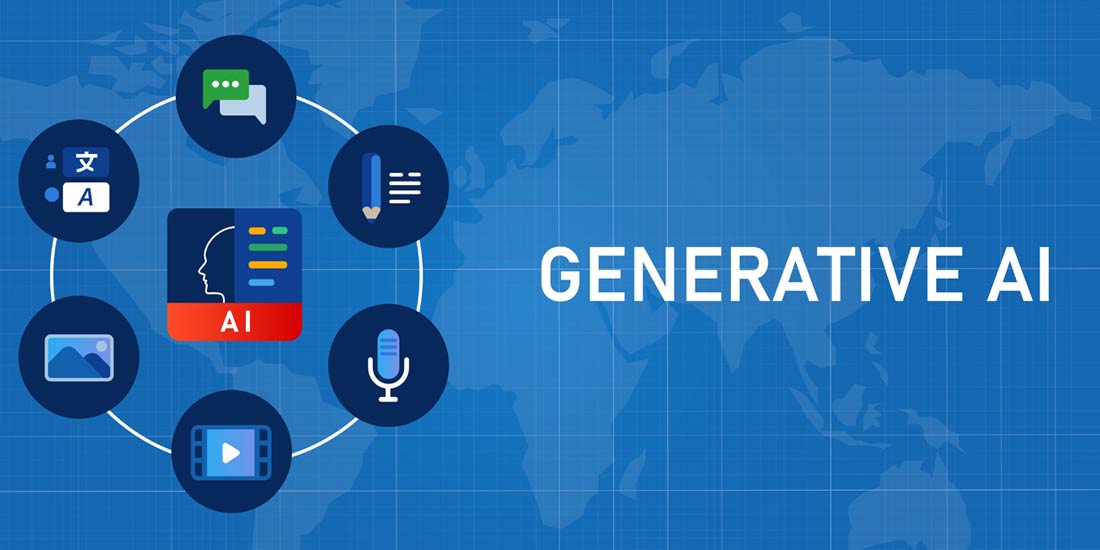Traditional analytics has long been the cornerstone of business intelligence. It involves gathering historical data, performing statistical analysis, and drawing conclusions to make informed decisions. While this approach, which relies on predefined rules and static models, has served organizations well, it has limitations. Traditional analytics excels at providing insights into past performance, but falls short in predicting future trends or prescribing optimal actions and, in a rapidly changing world, this retrospective view can be a significant disadvantage.
Artificial intelligence, on the other hand, represents a quantum leap in the world of data-driven decision-making. Unlike traditional analytics, AI can analyze vast amounts of data in real-time, allowing businesses to detect emerging patterns and trends that would be impossible to identify through traditional means. This predictive capability empowers organizations to proactively respond to market shifts and consumer behavior, staying one step ahead of the competition.
Moreover, AI introduces the concept of prescriptive analytics, which goes beyond traditional descriptive analytics. Descriptive analytics tells you what happened, while prescriptive analytics offers recommendations on what to do next. This is a game-changer for businesses as it provides actionable insights, enabling them to make data-driven decisions with confidence.
The Hyper-Personalization Revolution
One of the most compelling use cases for AI is hyper-personalization. With AI, organizations can tailor their products, services, and marketing efforts to each individual customer. This level of personalization goes far beyond what traditional analytics can achieve.
Imagine receiving product recommendations that are not only based on your past purchases but also on your current mood, preferences, and even the weather outside. AI can analyze a myriad of data points to create highly personalized experiences that resonate with customers on a profound level.
Leveraging AI for Continuous Experimentation and Learning
AI doesn’t stop at prediction, it also provides actionable recommendations. But what exactly does that optimal experience look like for each customer, and how does an organization move away from traditional segment-based offers, and move to true hyper-personalization?
Put simply, this is achieved through continuous experimentation and learning. If each customer engagement is thought of as an experiment, marketers can use AI to measure what works and what does not. AI allows businesses to move beyond the realm of traditional A/B testing, which is sporadic, slow, and in most cases a very manual effort.
Elements to Ensure AI Success
The key to successful AI adoption lies in understanding its potential and aligning it with business goals. It’s not just a technological upgrade; it’s a paradigm shift that has the power to reshape industries and drive innovation. However, it is imperative to address several critical factors including:
- Data Quality: This is the state of the information itself as data is the backbone of any AI system and its quality can make or break the effort and subsequent results. Companies must ensure that their data is accurate, current, and comprehensive, mitigating any biases or inconsistencies. This often means cleansing legacy data and adopting rigorous data collection and validation protocols.
- Experienced Professionals: Securing the right talent is another pivotal aspect. This doesn’t just mean hiring data scientists and AI specialists but also upskilling current employees to work with AI systems.
- Infrastructure: Is an important aspect as it plays a dual role. Not only is it about having the necessary hardware and software, but it’s also about creating an environment where AI can thrive, including cloud platforms and high-speed processing capabilities.
The Buy vs Build Debate and the Need for Ethical AI
Companies often face the decision of building their own AI capabilities in-house versus leveraging existing AI platforms. Both approaches have their merits and drawbacks. However, by adopting a hybrid approach and blending both strategies, businesses can achieve a balance between cost efficiency and quicker market entry, resulting in an accelerated return on investment (ROI).
Ethics in the AI implementation itself is another criteria that cannot be understated. Companies should establish guidelines ensuring that their AI systems are transparent, accountable, and free from biases. This includes considerations around privacy, data usage, and the societal implications of AI decisions.
Lastly, AI efforts should be in harmony with business objectives. Companies must define clear goals for their AI initiatives, ensuring they align with the larger mission and values of the organization. Periodic evaluations can help in assessing the ROI and making necessary adjustments. The benefits of AI are evolving at a rapid rate. While organizations are eager to learn from early adopters as they begin to embark on their own AI journey, it’s crucial that they make every effort to set it up for success.
About the Author
Corne Nagel holds the position of Lead Data Scientist at IKASI, an innovative self-learning platform powered by AI. IKASI specializes in hyper-personalizing engagement experiences for business and marketing professionals at the customer level, aiding them in enhancing their net revenue growth. As an AI and data science expert with more than 20 years’ experience, Corne has served as an advisor and Chief Data Science Officer to a strategic member of the Maltese Government AI team.
Sign up for the free insideBIGDATA newsletter.
Join us on Twitter: https://twitter.com/InsideBigData1
Join us on LinkedIn: https://www.linkedin.com/company/insidebigdata/
Join us on Facebook: https://www.facebook.com/insideBIGDATANOW



